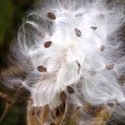Resources Compiled by Local Heroes
Recommended Native Plants for Landscaping in the Texas Hill Country
The plants in the pamphlet “Native Plants for Landscaping in the Texas Hill Country” were initially selected by members of the Kerrville Native Plant Society to provide a list of common and deer resistant plants that can be used for landscaping in the Kerrville and surrounding areas. Extremely handy and well-organized little booklet. Available for a suggested $2 donation at the Gift Shop of the Riverside Nature Center, at chapter meetings and at public outreach events
Native Plants “To Go” is a series of free downloadable books available as pdf files or for tablets and smartphones. Created by our very own Past President Sandra Magee and her husband Scott.
“Butterfly Larval Plants” is a compliation by Barbara Lowenthal and Sandra Magee. The plants listed are native to the Texas Hill Country and the Edwards Plateau. References used to make this spreadsheet are Butterfly Gardening for the South by Geyata Ajiivsgi and Texas A&M’s Checklist of Vascular Plants of Texas.
Thanks to Riverside Nature Center for these great informational documents.


“Identification of Milkweeds in Texas” is a great resource developed by Texas Parks and Wildlife in conjunction with the Lady Bird Johnson Wildflower Center. It has many useful color photographs as well as key identification characteristics and range maps for the many different milkweed species found in Texas.
“Carroll Abbott’s Texas Wildflower Newsletter” was written between 1976 and 1984 by Carroll Abbott, one of the founders and NPSOT and a Kerrville resident. These interesting newsletters contain information that is still valuable today, written in an entertaining and informal style by Mr. Abbott and other contributors.

These books by Jim Stanley are a great addition to the library of any landowner in the Texas Hill Country.
Jim is a member of our local NPSOT chapter and a graduate of one of the first classes of Texas Master Naturalists (TMN). Jim has volunteered countless hours of land management consulting as a TMN and also at Riverside Nature Center

This invaluable book charts a practical course for understanding and handling a variety of problems that both new and established landowners in the Texas Hill Country will confront-from brush control, grazing and overpopulation of deer to erosion, fire and management of exotic animals and plants.
 A Beginner’s Handbook for Rural Texas Landowner’s
A Beginner’s Handbook for Rural Texas Landowner’s
The subtitle spells it out: “How to Live in the Country Without Spoiling It.” This book is the perfect introduction for small landowners wanting to be good stewards of their piece of the Hill Country. As the title says, it’s a place to begin and a perfect lead-in to Stanley’s earlier book (above) which contains more specifics.
Also available at Riverside Nature Center.
 Hill Country Ecology: Essays on Plants, Animals, Water, and Land Management
Hill Country Ecology: Essays on Plants, Animals, Water, and Land Management
This is a compilation of essays published in the Kerrville Daily Times. In this book, Dr. Stanley, a knowledgeable naturalist of Hill Country issues, addresses a wide range of topics of interest and concern to residents of the Texas Hill Country.
Also available at Riverside Nature Center.



